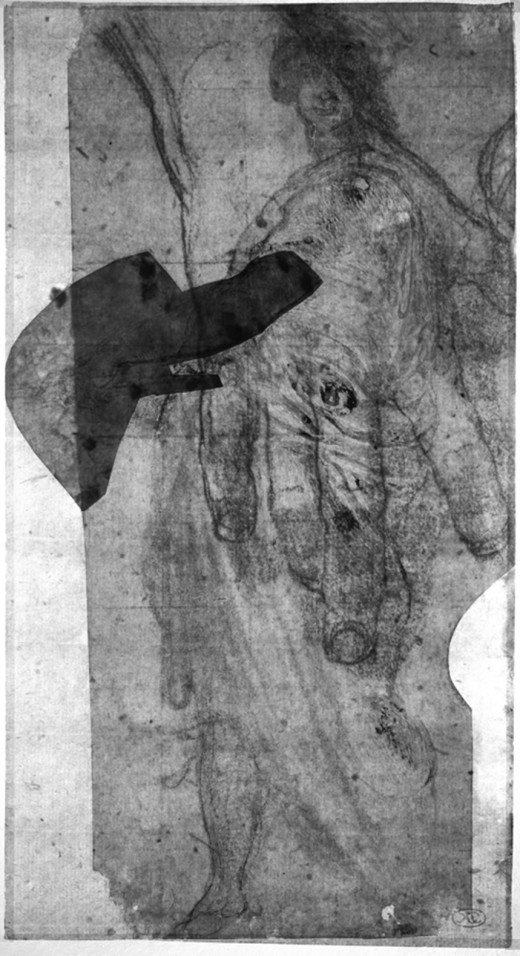Specifications
| Title | Standing Figure with a Baton |
|---|---|
| Material and technique | Black chalk, pen in brown ink, heightened with white, squared for transfer, on blue paper, laid down |
| Object type |
Drawing
> Two-dimensional object
> Art object
|
| Location | This object is in storage |
| Dimensions |
Height 284 mm Width 155 mm |
|---|---|
| Artists |
:
Raffaellino da Reggio
Draughtsman: Trometta (Niccolò Martinelli) Previously attributed: Taddeo Zuccaro |
| Accession number | I 116 (PK) |
| Credits | Loan Stichting Museum Boijmans Van Beuningen (former Koenigs collection), 1940 |
| Department | Drawings & Prints |
| Acquisition date | 1940 |
| Creation date | in circa 1569-1570 |
| Watermark | none (vH, ?P; backing sheet vV, 10P), viewed with IRP (transmittent light) |
| Inscriptions | letters 'A V [?]', 'G A' and 'V G' on the squaring (pen and brown ink) |
| Collector | Collector / Franz Koenigs |
| Mark | F.W. Koenigs (L.1023a) on backing sheet |
| Provenance | Franz W. Koenigs (1881-1941, L.1023a), Haarlem, acquired in 1920-1930 (Jacopo da Pontormo, corrected to Roman, early 16th century); D.G. van Beuningen (1877-1955), Rotterdam, acquired with the Koenigs Collection in 1940 and donated to Stichting Museum Boijmans Van Beuningen |
| Exhibitions | Rotterdam 2009 (coll 2 kw 3) |
| Internal exhibitions |
De Collectie Twee - wissel III, Prenten & Tekeningen (2009) |
| Research |
Show research Italian Drawings 1400-1600 |
| Literature | Gere 1969, no. 221, ill. 21 (Taddeo Zuccaro) |
| Material | |
| Object | |
| Technique |
Highlight
> Painting technique
> Technique
> Material and technique
Squared
> Squaring
> Drawing technique
> Technique
> Material and technique
Squared
> Squaring
> Drawing technique
> Technique
> Material and technique
|
| Geographical origin | Italy > Southern Europe > Europe |
| Place of manufacture | Rome > Italy > Southern Europe > Europe |
Do you have corrections or additional information about this work? Please, send us a message
























